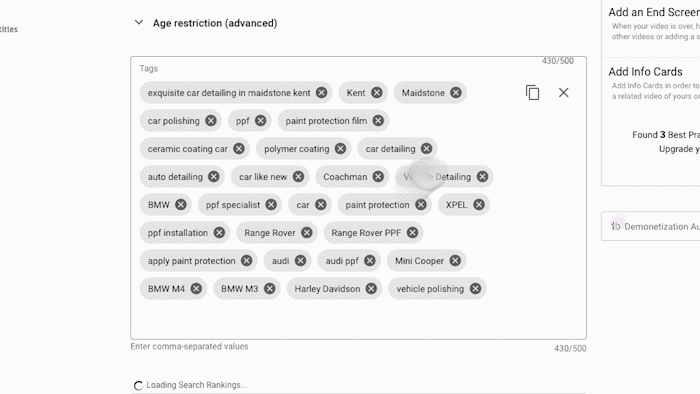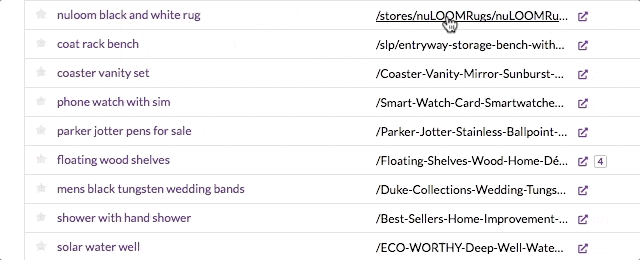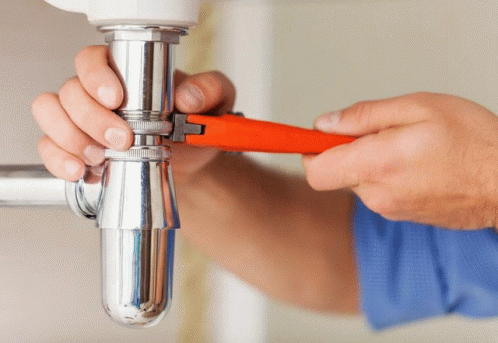Know how to optimize your plumbing company website to generate more clients, more leads, and rank higher in the search engine rankings.
As a plumbing contractor, your website should serve as the engine of all your marketing activities. If done properly, your plumbing website can help you generate more customers and leads for your business 24/7/365-even while you are on vacation or asleep.
Consider this scenario, a homeowner is in immediate need of a local plumber, and you don’t have any contacts in mind. They will pull out their smartphone, turn to Google and look for nearby plumbers in your locality.
In fact, it is a major trend among people nowadays to use Google to find out what they want, particularly via their smartphones. Therefore, it becomes important for plumbing contractors to have a mobile-friendly website and get new customers.
Here are a few things you can do to optimize your plumbing company website to get more clients and more leads.
Without further ado, let us dive in!
14 Easy Ways to Optimize Your Plumbing Website to Book More Jobs Online
Your plumbing company’s website is the most crucial marketing asset you have at your disposal. Clients who are contemplating doing business with you will assess your site against those of other plumbers online. They will read about your plumbing business philosophy, judge the quality of your completed projects and look for reviews from past clients.
So, how do you ensure that your plumbing website occupies the top listing when local homeowners or businesses are looking for a plumber?
These local SEO tips for plumbers will help you get your plumbing website to rank higher in the search engine results. Let’s get started!
Planning the Plumbing Website
Step #1: Perform Keyword Research
Keyword research is crucial to the success of any plumbing SEO campaign. Plumbing keywords are the questions, phrases, and terms people type into the search bar of Google or Bing. If you use the same questions, phrases, and terms on your plumbing website, search engines are likely to notice it and include your website on the search engine result pages.
For a plumbing company, the primary keyword you will focus on will be something along the lines of “[city]plumbers” or” plumbing contractor [city]” or “[city] plumbing service”. These are buying intent keywords, implying that they attract prospects who are near the bottom of the sales funnel and are ready to book your plumbing services.
Keywords are important in giving your plumbing website pages a chance of ranking higher in Bing and Google’s search engine result pages. To achieve this goal, try to use the keywords that your clients are looking for. Fortunately, there are a lot of keyword research tools like Google Keyword Planner, Ahrefs, and SEMrush that can help you find keywords people are typing in on the search bar of Google.
Once you understand what keywords prospects are looking for related to plumbing, you should include them on your webpage. Here are a few areas you should include those keywords to optimize your plumbing website:
Plumbing Keywords in Title Tags
You should ensure that your title tags are properly optimized for an effective plumbing SEO campaign. A title tag is a clickable text displayed in the organic search results, and it offers a reader a hint of what is the type of content found on a specific webpage. Accordingly, the reader can decide on whether or not to visit a webpage based on the title tag provided.
For instance, if a person looks for “common mistakes to avoid during your DIY plumbing project” and in the SERP, he obtains multiple results. If your title tags don’t correspond with a web page’s content, then prospects or clients will leave your plumbing website instantly, causing a higher bounce rate.
Thus, your title tag is the initial point of contact between your site and the reader. So, make sure that your title tag matches the content on your plumbing website. Likewise, include relevant plumbing keywords in your title tags to help search engine crawlers index your plumbing website.
Include keywords in your URL
When you incorporate keywords in the URL, it offers a relevant signal to search engines and helps in boosting your search engine rankings. So, when you create the URLs, make sure that you fit the most important keywords immediately after your domain name. For example, if the target keyword is “plumbing repair” then your URL should appear like this; www.plumberservices.com/plumbing/repair/
Use Keywords in the Content
Adding multiple keywords on your plumbing website helps your webpage to be featured whenever those search terms are used. However, you should avoid stuffing too many keywords in one content. As a general rule of the thumb, always try to use different plumbing keywords across various contents. This way, you will craft multiple contents for specific keywords.
Here are some crucial tips when it comes to using keywords to optimize your plumbing website:
- Use a unique title tag containing your primary keyword
- Images named with a primary plumbing keyword
- URLs should contain the page keyword
- Anchor text on every page and built into the footer
- Create XML sitemaps and submit them to Google or Bing webmasters.
- Use keywords in the meta descriptions to help Google or Bing crawl your plumbing website.
Step #2: Determine Your Plumbing Website Hierarchy
Each page of your plumbing company site should be optimized for one phrase or keyword. For example, suppose your plumbing company is situated in one city, as opposed to multiple locations in a state. In that case, you need to concentrate on the homepage as the main page to optimize your primary keyword.
The secondary pages include About us, service pages, blog, Index, FAQs, and any other pages that you think that prospects will be interested in when they land on your plumbing website. A few plumbing services which you can create separate service pages include: emergency plumbing services, drain repair and clog removal, shower repair and clog removal, and more.
Step #3: Optimize your Plumbing Website for Local Search
Optimizing your plumbing company website for local search will come with lots of benefits. In fact, it makes a lot of sense to target local businesses or homeowners in your area where you can offer your plumbing services. You cannot expect a prospect from Ontario to call for plumbing services in New Orleans.
Therefore, optimizing for local search to drive local organic traffic to your plumbing company website. For this goal, you need to make your brand name, address, and phone number consistent in all your marketing collaterals (both offline and online). So, when users find your plumbing website on the search engine results pages, they can instantly obtain your contact details and contact your company.
Step #4: Grab the Customer Attention by Optimizing the “Above the fold”
We have borrowed the term “above the fold” from the newspaper industry. Newspapers generally come into two folds. Above the fold typically denotes the top part of your newspaper that is visible even before unfolding it. Consider it as a book cover. It contains the most crucial information-the details that will determine whether or not clients will pay focus. Whether or not customers will engage with it and become a customer or lead.
When it comes to plumbing websites, above the fold denotes the part of the screen that’s visible even before you scroll down your page. It is no doubt the most important part of any plumbing website, as it will largely influence if clients will engage with that page or navigate to another plumbing contractor’s website. To avoid this, you need to make sure the crucial pages on your plumbing website are optimized above the fold. This technique alone can have a huge impact on the performance of your plumbing website.
Step #5: Show Your Competitive Difference
Make sure that you stand out over your competitors on your plumbing website as a reliable and trustworthy plumbing company. There are thousands of plumbing contractors out there. Why are you better than other plumbers? Do you offer reasonable service charges? Do you display trust and visibility with stats and reviews found on your plumbing website? If you have great testimonials on plumbing websites, they can make you stand out in front of other plumbing websites.
Several studies have shown that 72% of customers won’t take action until they read through online reviews, and that’s a huge number of people. You should also note that people will decline to do business with a plumbing company with many negative reviews.
The best way to conceal negative reviews is to obtain tons of positive reviews, and then negative reviews will be at the bottom of your list. Show potential customers that your plumbing company wants to solve problems and keep them happy. People want exceptional plumbing services, and your determination to solve their pain points shows that you care about the quality of your plumbing services.
Step #6: Optimize Your Plumbing Content
As a plumber, you should ensure that your content is of high quality and unique. If Google notices that your content is duplicated, then it will penalize your site and degrade your site rankings. In case you are not able to craft unique content, it is highly recommended that you partner with a professional Plumbing SEO content marketing agency. Moreover, you should post quality content regularly.
When you offer regular content, Google learns that you have something unique and helps to skyrocket your plumbing website rankings. Other elements will help you rank higher in the search engine result pages and obtain more traffic to your plumbing site. Other elements like XML and HTML sitemaps, using canonical tags, keeping your site code clean, making CSSS and JavaScript external, having a standard URL are also crucial.
Furthermore, there are always regular updates on Google algorithms daily which should be monitored and alterations incorporated into your plumbing website. Thus, you need a committed person or team to handle your plumbing SEO efforts. If you don’t have the right SEO expert, then partner with a reliable plumbing SEO agency for your plumbing website to assist you.
Step #7: Select Authentic, High-Quality Photos that Serve a Specific Purpose
When creating your plumbing website, don’t pay for vague before and after photos of plumbing services. Take photos of the completed projects that your crews have accomplished. Show plumbing emergency catastrophes that you have saved property owners from. Document your actual plumbing work.
Visibility of your completed projects is a great way to obtain instant credibility and help customers opt to contact your business when they see proof that they have helped solve the same problem for another customer.
Step #8: Make Sure That Your Brand Message Aligns with Your Target Markets Needs
Whatever your brand message is and how you put it across will determine your plumbing marketing success. You can offer the best plumbing services in your area, but if your brand message and method of presenting it doesn’t resonate with clients, they won’t pay attention and ultimately won’t become paying clients. The reverse is also true, you can offer the worst plumbing services in the world and book lots of service appointments if your brand message and its presentation resonate with what clients are searching for.
The only reason prospects or clients will visit your plumbing website is because they are searching for services you offer. They have a need or want to learn something, buy something, or experience something. But how will they know if you can offer that thing you are looking for? Through what and how you present your plumbing services on the internet.
Step #9: Optimize Your Plumbing Website Design
Your plumbing website design should offer prospects or clients an awesome user experience. So, you need to create a site that has an excellent responsive design. Responsive plumbing web designs utilize CSS3 queries to offer content for both desktop and mobile users by utilizing a flexible and fluid rigid design that instantly adjusts the size based on the device of a user’s screen. Since people use different kinds of devices, you need to make sure that your plumbing website works perfectly and there are no challenges navigating across different web pages. Thus, to avoid a high bounce rate for your site, contact a professional plumbing web design agency to assist you to create a mobile-friendly plumbing web design.
Furthermore, to improve your user experience, ensures that your site doesn’t have unnecessary pop-ups and flash. Too many Pop-ups on your plumbing website can make your visitors annoyed or irritated.
Step #10: Optimize Your Plumbing Website Speed
Visitors expect your plumbing website to load in less than three seconds, and if not, they will click off to another plumber’s site. This means that your plumbing website must load quickly, which calls for a properly designed site and one that follows the best technical SEO processes.
Google loves a mobile-friendly plumbing website, and this means they prioritize mobile-friendly sites over desktop plumbing with higher search rankings.
A mobile-optimized plumbing website implies a visitor can view the content on your site without having to zoom and pinch. If you want to avoid losing potential clients, ensure that your plumbing website is mobile optimized.
Step #11: Include Clear Call to Action to Optimize Your Plumbing Website
Getting visitors to your plumbing website is one thing, converting those browsers unto paying clients is another. Do you know that 96% of all site visitors will leave your plumbing website without taking any action? While there are various reasons for this, one of the major reasons is that they don’t understand what to do next after landing on your plumbing website.
Don’t assume clients know what to do once they come to your plumbing website. You need to tell them exactly what you want them to do.
Your plumbing website should contain two call to action. A primary CTA concentrates on generating service appointments, and a second CTA focuses on generating qualified leads.
For example, your primary CTA can be “Book an Appointment Now”. This is a CTA designed to generate a customer. On the flip side, a secondary CTA is “Download the plumbing marketing guide to generate more leads online”. This secondary CTA is specifically designed to produce a lead, which your plumbing business can follow up with.
Having clear CTA’s on your plumbing website-above the fold- will help to minimize your bounce rate. This may sound like a simple task, but many plumbing contractors fail to do it properly.
Step #12: Ramp Up Your Online Customer Reviews
Getting reviews on platforms like Google My Business, Yelp, and Facebook to show prospects and search engines that people trust your plumbing business.
Reach out to Get Online Reviews
If clients aren’t leaving online reviews on their own, request customers personally to share their experience online when they have an opportunity. Show them how crucial online reviews are to local home service businesses like yours and how their response helps other homeowners or businesses find your plumbing services online. If you have their email address on your file, message them with links to your profile to help them leave a review.
Respond to all Reviews
When you get a review, thank the reviewer for their feedback, whether negative or positive and address any problems they might have. This shows that you care and listen to their feedback.
Don’t have time to manually monitor online reviews periodically? Consider partnering with a plumbing online reputation management agency to help you pull your new reviews and respond to them in a professional and timely manner.
Track Your Progress
Ask your plumbing website developer to install tools such as Google Search Console and Google Analytics to track the website traffic over time. These SEO performance trackers will help you know whether your plumbing website optimization strategies are paying off or whether they need to be adjusted.
Frequently Asked Questions on Plumbing Website Optimization
What is SEO for plumbers?
SEO for plumbers is typically a systematic process of editing and crafting the website content and code for your plumbing company to rank higher in the search results. To help your plumbing website rank higher on the search engines like Bing or Google, it needs to load in less than three seconds, be mobile-friendly and publish high-quality content on a regular basis.
Why does your plumbing business need professional SEO services?
More than 90% of businesses or homeowners in the US prefer conducting research online to find a local plumbing contractor. If you want to generate more relevant traffic and get more business opportunities and leads, then hiring a professional plumbing SEO services agency can be a game-changer for you.
What are the major strategies you can use to optimize your plumbing website for SEO?
Here is our proven process of ranking higher in the SERPs for keywords related to your plumbing business:
- Perform a comprehensive keyword research
- Optimize your site loading speed
- Make your website responsive
- Publish helpful, quality plumbing content regularly
- Put your brand message on top of your website
Optimize Your Plumbing Website with Blackstorm Design + Marketing Today
With all the steps discussed above, your plumbing website will be consistently delivering qualified leads and paying clients on autopilot. Be sure to evaluate the optimal results received to know what’s working and what doesn’t. However, this is not a complete plumbing SEO list by all means.
If you don’t have the time or expertise to optimize your plumbing website on your own, consider scheduling a free discovery call with Blackstorm Design +Marketing to help with your SEO campaigns today.





















